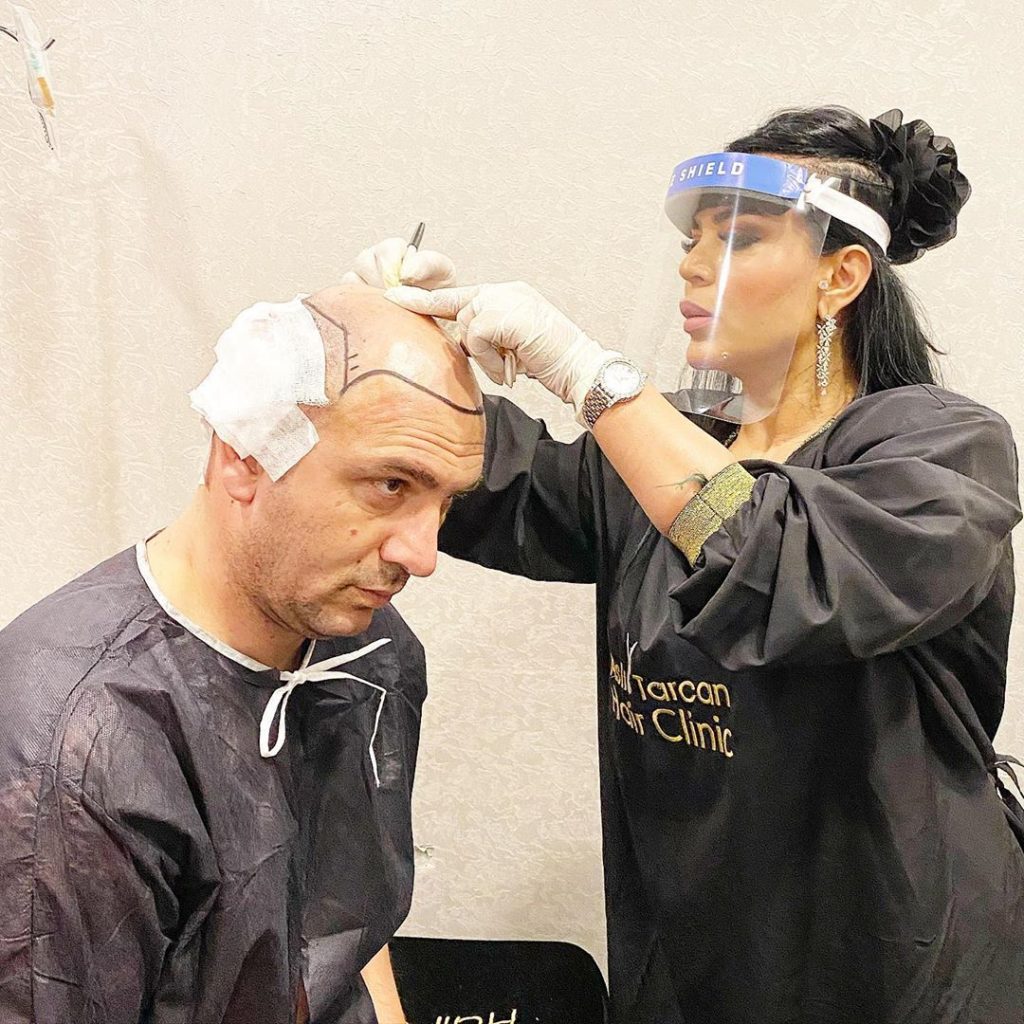
Breast augmentation surgery is a procedure that is performed to increase the size of the breast and make it shape look more beautiful by placing silicone, saline prostheses, or via fat injection. Thanks to this surgery, it is possible to restore breast volume that is lost due to weight losing or pregnancy. It also improves natural breast size asymmetry and you can achieve a more rounded breast shape after undergoing the operation.
The main motivation of breast augmentation surgery is to make the natural measurements of the patient look way better and create both a more symmetrical and aesthetic appearance. As with any other surgeries, before having this one you must think carefully and be decisive about what you expect from this surgery. It is also important to have realistic expectations. It is true that breast augmentation increases fullness and projection of your breasts improves the balance of breasts and hip contours, and enhances both self-image and self-esteem. However, a breast augmentation alone may not correct severely sagging breasts. Along with augmentation, one may need to have breast lift operation for sagging breasts to make them look fuller and lifted.


Women have several reasons to consider undergoing breast augmentation surgery and the desire for bigger breasts is the most common factor. It is one of the most effective operations in correcting breast asymmetries and other problems. However, to be eligible for the operation you must first meet some requirements. You must be completely healthy, your breasts must be fully developed and one or both of your breasts failed to develop normally or have an elongated shape.
It is important that you are not pregnant or breastfeeding mothers. If you meet all these conditions and feel bothered by feeling that your breasts are too small than normal, be discontent with your breasts losing and shape and volume due to pregnancy, weight loss, or aging, or if you are unhappy with the upper part of your breast looking empty, you can undergo breast augmentation operation. In addition, breast augmentation can be applied to correct development-related problems and asymmetries that result from breast cancer surgery.
Before The Operation
Before undergoing the augmentation operation, you should first discuss why you want to have augmentation surgery, the likely outcomes of breast augmentation and any risks or potential complications, and what are your expectations and the desired outcome. You should tell about your existing medical conditions, drug allergies, previous medical treatments, current medications, vitamins, or herbal supplements you are taking. Besides, you may be asked to do some things. These may include getting a blood test, avoiding taking aspirin or certain anti-inflammatory drugs, taking certain medications or adjust your current medications, etc. And you must stop smoking and taking recreational drugs, such as cocaine. The surgeon may also evaluate your general health status and any pre-existing health conditions or risk factors, examine and measure your breasts, including detailed measurements of their size and shape, skin quality and placement of your nipples and areolas, and take photographs. It is crucial to understand all aspects of your breast augmentation surgery and address all your questions and discuss them with your plastic surgeon without being shy.
Breast augmentation surgery is generally performed in an accredited outpatient or ambulatory surgical center or a hospital to ensure your safety. If you have the surgery on an outpatient basis, you may need someone to drive you home and stay with you the first night after the surgery.
During The Operation
During breast augmentation surgery, there are some steps including anesthesia, making incisions, placing the implant, and closing the incisions.
Anesthesia
Certain medications are administered to ensure your comfort during the operation. Breast augmentation surgery is generally applied under general anesthesia. The anesthesiologist makes the patients fall asleep via intravenous sedation or breathing and keeps the patient asleep until the end of surgery. By doing so, the main goal is to make sure the patients do not see or feel anything throughout the operation.
When breast augmentation surgery is done, the patients are woken up from anesthesia, but they usually still feel numb and tired for a while afterward. It is important to take care of the patients during this process because some may experience side effects of anesthesia. These side effects may include throat ache, headache, dizziness, nausea, vomiting, shaking, and muscle pain. However, all these side effects are temporary and they will fade away as long as patients come to themselves. But still, if you feel like you experience permanent problems after anesthesia, you must consult your doctor about it.
The Incision
The breast augmentation process starts by making an incision below the breast, on the armpit, or around the areola, encircling the nipple. Incisions are usually made in inconspicuous areas to minimize any potential visible scarring. It is one of the top priorities for both the patient and the surgeon because although the scars become indistinct over time, they never completely disappear. Incisions differ depending on the type of breast implant, degree of enlargement desired by the patient, and the specific anatomy of the patient. Incision types are peri-areolar incision which is along the areolar edge, inframammary fold which is the fold under the breast, and axillary incision which is made in the armpit.
Inserting And Placement Of The Breast Implant
Once the incision is made, the breast implant is inserted and there are two different implant methods in this one. The first one is a submuscular placement that is done under the pectoral muscle and the second one is submammary or subglandular placement which is done directly behind the breast tissue over the pectoral muscle. Implant manufacturers occasionally introduce new styles and types of breast implants, so there may be additional options available. Which method will be used depends on the type of breast implant, degree of enlargement desired by the patient, and the specific anatomy of the patient.
Some surgeons prefer placing breast implants in front of breast muscle because this method decreases the amount of pain following the operation. Other surgeons suggest that the implant should be placed behind breast muscle so that it will not affect the result of future breast X-Rays. You can talk to your surgeon about which method will best suit you but whatever the final choice is, it is important for you to monitor your breast implants and follow-up with your plastic surgeon for appropriate checkups.
Closing The Incisions
After the breast implant is placed, the cuts are carefully closed with layered sutures in the breast tissue and with sutures, skin adhesive, or surgical tape to close the skin. Some surgeons prefer absorbable threads while others using traditional ones. If your surgeon uses traditional threes then they should be removed as soon as the incisions are closed enough and there is no longer need for any stitches. This process usually happens between the first and second week after the breast augmentation surgery.
However, if the surgeon prefers using absorbable threads, there will be no need to remove them because they will decay in the body and dissolve on their own. In the course of time, the incisions from the surgery will gradually fade away however how visible the scars will depend on your genetics and exposure of your body to nicotine or infection. Breast augmentation surgery is done once all the incisions are closed and breasts are wrapped in gauze and supported. The doctors suggest wearing a surgical bra to provide support to the breast during the first few weeks. It is vital to listen to the doctor`s instructions on how to wear those bras.
By following all the guidelines, your healing process will be accelerated and any peril of potential discomfort is minimized. Also, it is very important to keep the are of the stitches clean not to prolong your recovery period and make your stitches more visible. You should avoid putting the cut area in water and all kinds of tiring activity, heavy lifting, and stretching that can pull the stitches. Besides, you should not allow dirt or any other material to touch the area.
After The Operation
After the breast augmentation surgery, you will be given certain postoperative instructions and follow-up plans. You may also be given some medications by your surgeon including painkillers and an antibiotic to avoid infection. You should wear your bra to support your breast as instructed by your surgeon. Usually acute level of pain subsides up to 5 days, but you may still experience swelling or pain for a couple of weeks.
Potential Risks Of Breast Augmentation Surgery
Hundreds of thousands of patients undergo breast augmentation surgery and usually report no adverse effects. However, if a problem occurs the surgeons turn to science to provide detailed, accurate information and decision making and then solve the problem. But you must bear in mind that as with any other procedures, the augmentation process may possess some risks. The decision to undergo an aesthetic surgery is extremely challenging and you had better weigh the potential benefits in achieving your goals with the risks and potential complications of breast augmentation surgery.
These risk may include potential risks from anesthesia as mentioned before, hematoma, infection, changes in nipple or breast sensation, poor scarring, wrong position of the implant, implant leakage, rupture, fluid accumulation, wrinkling of the skin over the implant, persistent pain, the possibility of additional surgery. You will be informed about all these risks prior to your consent for the breast augmentation operation. It is important that you address all your questions to your plastic surgeon.
You may use the following questions as a guide:
- What are the risks and complications associated with my procedure?
- How are complications handled?
- What are my options if I am dissatisfied with the cosmetic outcome of my implanted breasts?
- How will my breasts look if I choose to have the implants removed in the future without replacement?
- Do you have breast augmentation before-and-after photos I can look at for this procedure and what results are reasonable for me?
- Am I a good candidate for breast enhancement or breast enlargement?
- What will be expected of me to get the best results?
- Where and how will you perform my breast augmentation surgery?
- What shape, size, surface texturing, incision site, and placement site are recommended for me?
- How long of a recovery period can I expect, and what kind of help will I need during my recovery?
- Were you trained specifically in the field of plastic surgery?
It is also important for you to know that breast implants are not guaranteed to last a lifetime and an additional surgery may be required to replace one or both implants. Such occasions as pregnancy, weight gain or loss, and menopause may influence the appearance of augmented breasts over the course of your lifetime. You should regularly see your doctor to examine your breasts` health and to evaluate the condition of your breast implants.
How Much Does Breast Augmentation Surgery Cost?
The cost for breast augmentation surgery is $4000 on average according to 2019 statistics from the American Society of Plastic Surgeons. However, there may be some additions to this average cost since you may also be charged for anesthesia, operating room facilities, or other related expenses. You can consult your hospital, surgeon, or surgeon’s office to determine your overall fee. Also, how much you will pay for the surgery may vary depending on the experience of the surgeon you choose, the type of procedure used, and the geographic office location. Breast augmentation surgery costs may include anesthesia fees, hospital costs, medical tests, post-surgery garments, prescriptions for medication, and surgeon’s fee.
Breast augmentation surgery costs, related complications, or another surgery to revise the appearance of your breasts are generally not covered by most health insurance plans as it is a plastic surgery performed in line with the will of the patient. You are recommended to review your health insurance policy before undergoing breast augmentation surgery.


